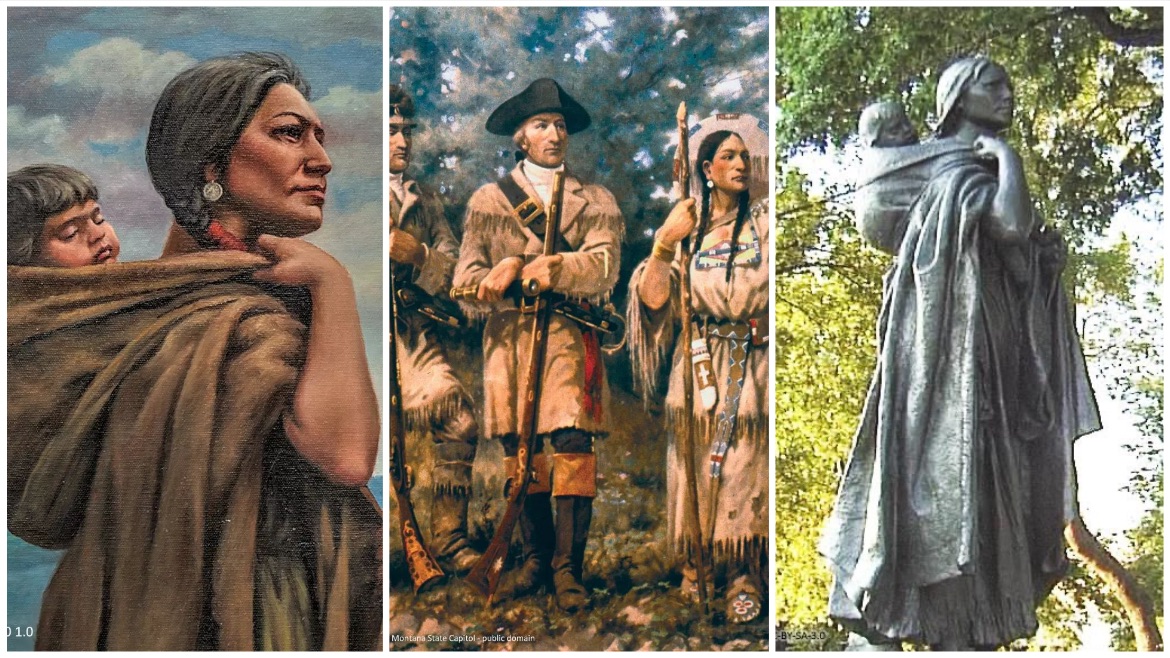

At the age of 12, while her people were traveling, Sacagawea was captured during an attack by the Hidatsa tribe. She was then adopted according to their customs and took care of agriculture like the other women. She only lived with them for a short time, for she was later won in a game of chance by Toussaint Charbonneau, a French-Canadian trapper who married her.
At 16, Sacagawea and her husband joined Lewis and Clark’s expedition as interpreter and guide. Her knowledge of the peoples, environments and climates encountered ensured the success of the expedition. She also saved it from failure at least twice: when she avoided the loss of food and documents in the rapids, and when she helped communicate with the Shoshones, a tribe that was initially hostile to their passage and whose chief was none other than her brother Cameahwait.
Her exploit is all the more remarkable that she gave birth to a son, just before or during the expedition, and then had to take care of him during the two years journey (1804-1806).
In 1812, she gave birth to a second child, and joined Charbonneau on another expedition. It is the journals of this second journey that record her end: "this night Charbonneau's wife, a Shoshone squaw, died of a putrid fever."
Her role in Lewis and Clark's expedition contributed to the new European settlers' acceptance of the Indian people’s knowledge and usefulness, especially the women.
Throughout the 20th century, Sacagawea became a role model for women’s rights and was elevated to the rank of national heroine, so much so that she was associated with the concept of manifest destiny.
@ Adama Toulon - Julie Henry Poutrel
© Photo: Dsdugan - CC-0 1.0 -- Personal photograph taken at Montana State Capitol - public domain -- Hans Andersen - CC-BY-SA-3.0

